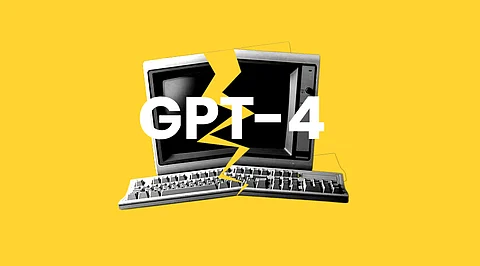

Artificial intelligence has come a long way in recent years, and OpenAI GPT-4 is the next big thing in natural language processing (NLP). The current version of the text-generating language model, GPT-3.5, has exceeded people's expectations with its conversational features, from conversational partners to code generation.
However, it is an open secret that its creator – the artificial intelligence research organization OpenAI – is well aware of the development of its successor, GPT-4. GPT-4 is said to be much more powerful and capable than GPT-3. One source even claimed that the number of parameters had increased to 100 trillion, although OpenAI CEO Sam Altman vehemently denied this.
Despite being one of the most awaited AI news, there's little public word about GPT- 4 what it'll be like, its features, or its capacities. Altman conducted a Q&A last time and gave many hints on OpenAI's ideas for GPT- 4. One thing he said for sure is that GPT- 4 won't have 100T parameters.
They are my prognostications on GPT- 4 given the word we've from OpenAI and Sam Altman, and the current trends and the state-of-the-art in language AI.
GPT-3 was only trained formerly despite some crimes that in other cases would have led to torn training. OpenAI decided to not do it due to the unaffordable costs, precluding experimenters to find the stylish set of hyperparameters for the model (e.g. literacy rate, batch size, sequence length, etc).
Another consequence of high training costs is that analyses of model guests are constricted. When Kaplan's platoon concluded model size was the most applicable variable to ameliorate performance, they weren't factoring in the number of training commemoratives-that is the quantum of data the models were fed. Doing so would've needed prohibitive quantities of computing coffers.
Size of model: GPT-4 will be larger than GPT-3, but it won't be nearly as big as the largest models currently available (the MT-NLG 530B and the PaLM 540B). The size will not be a distinguishing characteristic.
Optimality: Compared to GPT-3, GPT-4 will require more computation. New optimality insights into parameterization (optimal hyperparameters) and scaling laws will be implemented (the number of training tokens is just as important as the size of the model).
Multimodality: GPT-4 will be a multimodal text-only model. Before completely moving on to multimodal models like DALLE, which they predict will eventually surpass unimodal systems, OpenAI intends to exploit language models to their very limits.
Sparsity: GPT-4 will be a dense model, meaning that all parameters will be used to process any given input, following the trend set by GPT-2 and GPT-3. In the future, sparsity will take over more and more.
Alignment: GPT-4 will be closer to our interests than GPT-3. It will put what it learned from InstructGPT, which was trained with feedback from people. However, AI alignment is still a long way off, and efforts ought to be carefully evaluated rather than exaggerated.
Join our WhatsApp Channel to get the latest news, exclusives and videos on WhatsApp
_____________
Disclaimer: Analytics Insight does not provide financial advice or guidance. Also note that the cryptocurrencies mentioned/listed on the website could potentially be scams, i.e. designed to induce you to invest financial resources that may be lost forever and not be recoverable once investments are made. You are responsible for conducting your own research (DYOR) before making any investments. Read more here.
